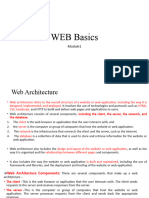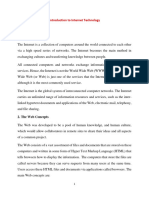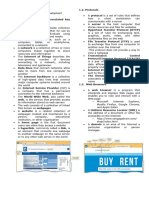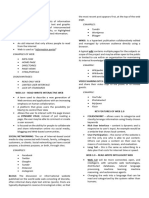0% found this document useful (0 votes)
10 views15 pagesE-Web Design
The document outlines a course on Full Stack Development, covering key topics such as the introduction to the internet, web protocols, web servers, web design principles, and website structure. It explains the evolution of the web from Web 1.0 to Web 3.0, details various web protocols and server types, and emphasizes best practices for effective web design and structure. The course aims to equip developers with the knowledge to create visually appealing, functional, secure, and scalable web applications.
Uploaded by
Patel BhagirathCopyright
© © All Rights Reserved
We take content rights seriously. If you suspect this is your content, claim it here.
Available Formats
Download as PDF or read online on Scribd
0% found this document useful (0 votes)
10 views15 pagesE-Web Design
The document outlines a course on Full Stack Development, covering key topics such as the introduction to the internet, web protocols, web servers, web design principles, and website structure. It explains the evolution of the web from Web 1.0 to Web 3.0, details various web protocols and server types, and emphasizes best practices for effective web design and structure. The course aims to equip developers with the knowledge to create visually appealing, functional, secure, and scalable web applications.
Uploaded by
Patel BhagirathCopyright
© © All Rights Reserved
We take content rights seriously. If you suspect this is your content, claim it here.
Available Formats
Download as PDF or read online on Scribd
/ 15































































